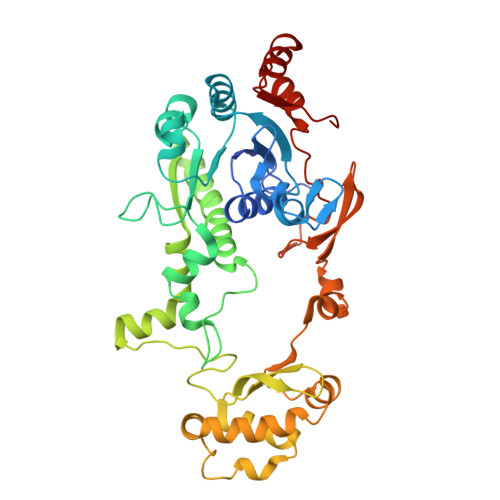Characterization, Structure, and Inhibition of the Human Succinyl-CoA:glutarate-CoA Transferase, a Putative Genetic Modifier of Glutaric Aciduria Type 1.
Wu, R., Khamrui, S., Dodatko, T., Leandro, J., Sabovic, A., Violante, S., Cross, J.R., Marsan, E., Kumar, K., DeVita, R.J., Lazarus, M.B., Houten, S.M.(2024) ACS Chem Biol 19: 1544-1553
- PubMed: 38915184
- DOI: https://doi.org/10.1021/acschembio.4c00204
- Primary Citation of Related Structures:
9BR6, 9BR7 - PubMed Abstract:
Glutaric Aciduria Type 1 (GA1) is a serious inborn error of metabolism with no pharmacological treatments. A novel strategy to treat this disease is to divert the toxic biochemical intermediates to less toxic or nontoxic metabolites. Here, we report a putative novel target, succinyl-CoA:glutarate-CoA transferase (SUGCT), which we hypothesize suppresses the GA1 metabolic phenotype through decreasing glutaryl-CoA and the derived 3-hydroxyglutaric acid. SUGCT is a type III CoA transferase that uses succinyl-CoA and glutaric acid as substrates. We report the structure of SUGCT, develop enzyme- and cell-based assays, and identify valsartan and losartan carboxylic acid as inhibitors of the enzyme in a high-throughput screen of FDA-approved compounds. The cocrystal structure of SUGCT with losartan carboxylic acid revealed a novel pocket in the active site and further validated the high-throughput screening approach. These results may form the basis for the future development of new pharmacological intervention to treat GA1.
- Department of Pharmacological Sciences, Drug Discovery Institute, Icahn School of Medicine at Mount Sinai, New York, New York 10029, United States.
Organizational Affiliation:



















